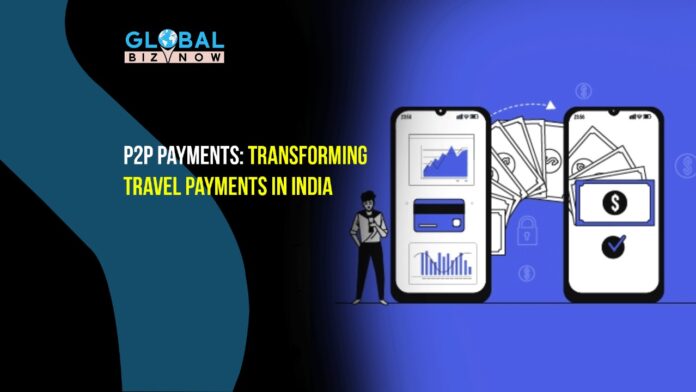Cashless transactions in the world: India takes a global lead with the Unified Payments Interface. For India, a cashless economy is a dream come true. And at its helm are UPI transactions that have not only made India an efficient nation to conduct its businesses but have also helped change how Indians spend on goods and services in their lives. The pioneering UPI One World service, first introduced to allow foreign tourists to make merchant payments in India, is now gearing up for a far more ambitious upgrade: peer-to-peer (P2P) payments.
The Vision of UPI One World
It started as a service to assist foreign travelers in making convenient payments without any hassle; UPI One World offers such freedom now – users can make merchant payments directly from their international cards. Being able to use international cards helps foreigners navigate India’s markets and restaurants and stores without all that cash.
But an important gap remains: a lot of travelers cannot afford to pay the rickshaw driver, the roadside tea vendor, or even a friend sharing the bill. UPI One World would fill this gap by enabling travel with P2P capabilities that allow money transfers to any other person having a UPI ID, much like any Indian resident.
Why P2P Payments Matter
- Empowering Small Vendors:Receiving payments digitally can do wonders for street hawkers, local artisans, and even domestic helpers. It will benefit the 40% workforce which is involved in small business.
- Increasing Ease for Travelers:Cash-only businesses often pose a challenge to foreign travelers while transacting. P2P payments would make the travel experience less difficult for foreign travelers as they would not need to carry currency.
- Financial Inclusion:In India more than 260 million people use UPI. Hence extending the platform to include foreign travelers makes the digital economy more inclusive and serves as an example for others
The Challenges Ahead
Although it is a forward-thinking move to include P2P payments in UPI One World, it is not without its challenges:
- Physical KYC Requirements:Travelers would have to undergo KYC verification to use UPI for P2P transactions. Currently, this is possible only in physical formats, which may deter adoption unless simplified.
- Awareness and Adoption:Many international visitors are unaware of its functionalities or unwilling to use UPI despite its popularity in India. The gap could be bridged by campaigns or demonstrations at the main entry points, such as airports.
- Cross-Border Regulations: Since UPI One World incorporates international financial institutions, Indian regulatory compliance is crucial for cross-border success, just like global regulatory compliance.
Travelers would require transparent and fair currency exchange rates when using UPI for P2P payments. Maintaining trust in this regard is essential for widespread adoption.
What’s Driving the Expansion?
- UPI’s Proven Success:In 2023 alone, UPI recorded 8 billion transactions per month, highlighting its reliability and widespread acceptance. Extending P2P payments to foreign travelers builds on this momentum.
- India’s Growing Tourism Industry:With over 17 million foreign tourists visiting India annually, expanding UPI One World to P2P payments caters to a significant audience, boosting tourism revenue.
- Global Leadership in Fintech:At that point, other countries look at the UPI of India as a model and extend similar crossborder functionalities so that India can emerge globally with something akin to world-beating cross-border, digital payments.
Future Of UPI-One World
P2P Payments could have profound long-term effects:
- Economic Upsurge:
Digital Payment facilitates much better spending. By allowing easy payments between tourists and small vendors in any foreign country, increased sums stay within the economy in benefits toward tiny vendors and growth.
- Strengthened Global Reputation:
Being a front-runner in digital payments, the ability of India to provide an inclusive and seamless system for foreign travelers will further strengthen its position on the global fintech map.
- Improved User Experience:
A seamless P2P payment system would enhance the overall travel experience in India, making it a more attractive destination for tourists.
- Increased Revenue for Payment Platforms:
New sources of revenue are also obtained by the payment service providers as a result of transaction fees from foreign users.
Expert Opinion
Fintech experts see a lot of hope in the potential of P2P expansion of UPI One World. “This move marks India’s commitment to building a true global digital payment ecosystem. It’s not just about convenience, but creating new opportunities for growth,” says Nandan Nilekani, architect of Aadhaar and a figurehead of India’s digital revolution.
Rajan Anandan, former head of Google in India, is also vocal about this issue: “India is setting benchmarks for digital payments. The game-changer that is allowing P2P payments for international travelers will look to emulate other nations.”
A Peek into 2025
By 2025, UPI One World could well redefine travel payments in India. Imagine a traveler from New York tipping his or her local guide in Varanasi or paying for some handcrafted souvenir in Jaipur-all through a simple UPI transfer. Not just convenient, it’s revolutionary.
To make this dream come true, the collaboration of government bodies, fintech companies, and banks will have to work together on solving the challenges and make it easy for users.
Steps towards simplification, increasing awareness, and keeping currency exchange rates competitive should be achieved.
A World United by Payments
The proposed expansion of UPI One World to include P2P payments is more than a feature update; it’s a bold step towards creating a unified global digital economy. India reaffirms its leadership in fintech innovation, by empowering foreign travelers to transact with small vendors.



